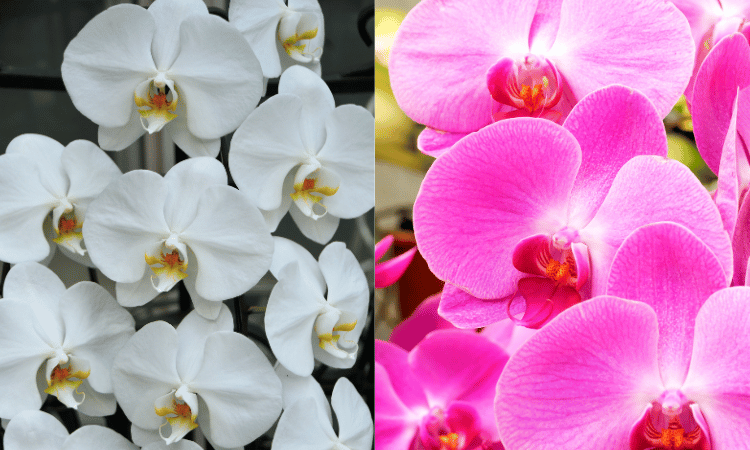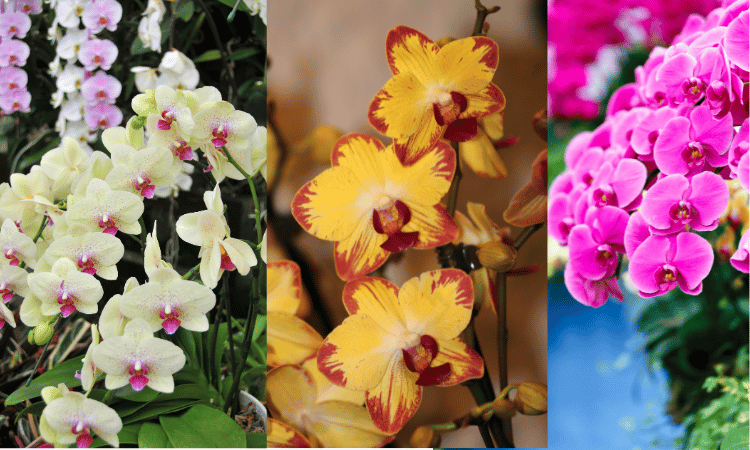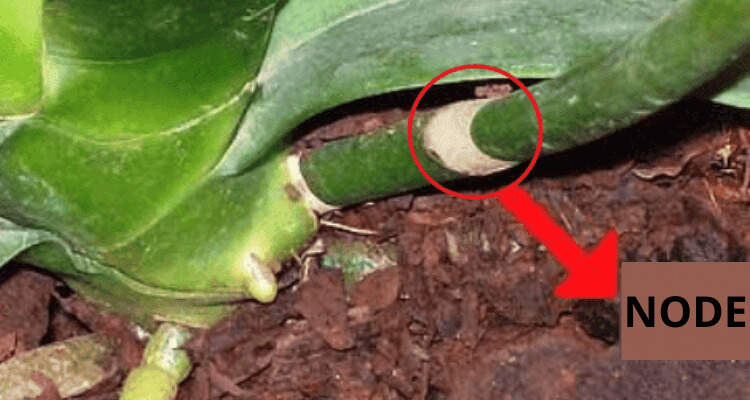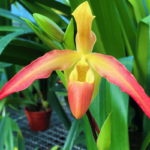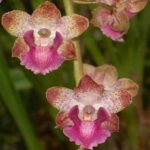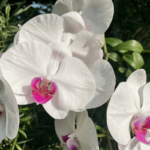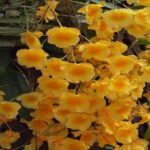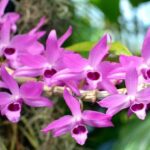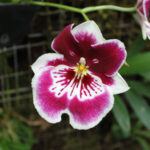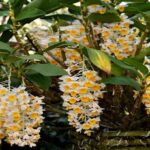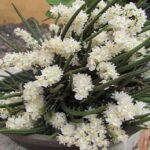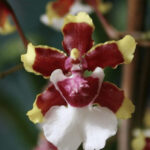You buy an orchid, and it comes full of health and with several flowers.
But time passes…
The flowers start to fall, and doubts begin to arise, the most common one being:
“Should I or should I not cut the flower spike of my orchid?”
And that’s why I decided to write this article.
Below, I will not only explain to you when you should or should not cut the flower spike of your orchid.
I will also teach you some advanced techniques that few orchid growers know (one of them, I had never heard of before researching to write this text).
Learn How to Achieve Super Blooms on Your Orchids
🛑 If you love orchids and you're tired of not being able to make them bloom...
Then, know that thousands of beginner growers are achieving beautiful flowers on their orchids by following this method.
Click the button below to have beautiful orchids with show-worthy flowers every year. ⤵
What is an Orchid Flower Spike?
The first step is to better understand what a flower spike is.
So, know that in a simplified way, it is a structure that appears on your orchids and, over time, it grows, and the flowers of your plant will appear on it.
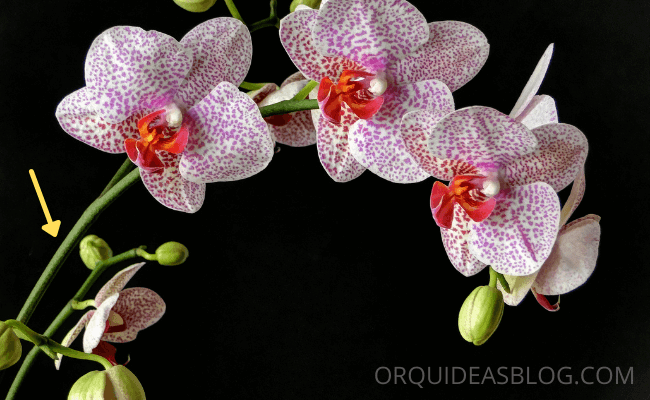
They can be of various sizes and can be single or multiple, depending on the species of your orchid.
For example, most Phalaenopsis species have single spikes, but there are some variations that can produce more spikes, such as:
- Phalaenopsis equestris
- Phalaenopsis mini mark
How to Differentiate a New Flower Spike from a New Root
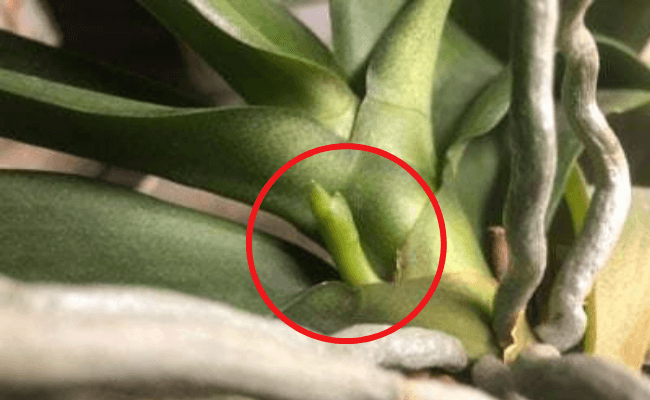
This is a very common doubt because both structures are very similar when young, but there are some characteristics of flower spikes that will help you distinguish them from roots:
- Spikes usually appear on the sides of the plant, between the leaves.
- The top looks like a glove.
- They are greener than the roots and do not shine.
- They move toward the strongest source of light (if you want to control where they grow, you need to use staking).
- They usually appear 1 or 2 times a year.
Anyway, Should I or Shouldn’t I Cut the Orchid Flower Spike?
The answer to this question is…
IT DEPENDS
You see, the first step in making this decision is to identify if your orchid is a Phalaenopsis.
Basically, this is not a difficult task. Below I have left a photo of some Phalaenopsis so you can see if the flowers of your orchid are similar.
This is not the most accurate way of identification because the denphal can be confused with Phalaenopsis, but I believe that only with these photos, you can already get a good idea of the genus of your orchid.
If your orchid is not a Phalaenopsis, you will either cut the flower spike of your orchid completely or not cut it and let it dry naturally.
If your orchid is a Phalaenopsis, you can choose to cut it completely, partially, or not cut the flower spike of your orchid.
SPECIAL TIP:
Always use sterilized scissors when pruning your orchid. To sterilize your scissors, simply put the metal part in the fire for a short period, you can use your stove for that.
When to Completely Cut the Flower Spike
Regardless of the species you cultivate, your orchid spends a lot of energy producing flowers and maintaining its flower spikes. It is because of this great need for energy and health that making an orchid bloom is often a great challenge for a beginner.
So, if:
- Your plant is weak
- Your plant is dehydrated
- Your plant is sick
- You want to save your orchid’s energy for future blooms
You will cut the flower spike completely.
When to Partially Cut the Flower Spike
This is a technique that only works for Phalaenopsis. In this case, you will cut your flower spike about 2 to 4 cm above the third node.
If you can’t identify what a “node” is on your orchid, see the image below.
By doing this, your orchid can:
- Generate keikis
- Generate a new bloom (smaller and less numerous than the previous one)
- Simply dry the spikes
The new bloom can take 8 to 12 weeks to appear.
When Not to Cut the Flower Spike
Here, you don’t need to do anything because the spike will dry over time, then break and fall off your orchid. This is a good option for those who prefer a more natural cultivation.
The problem is that when it breaks, it can leave a wound, and this wound can expose your orchid to pests and diseases, like mealybugs.
When that happens, sprinkle cinnamon powder on the wound.
SPECIAL TIP:
In the case of Phalaenopsis, you can choose not to cut the spike to get keikis on your orchid. To increase your chances of success, besides not cutting the spike, you should also sprinkle cinnamon powder on the potting mixes.
Common Questions
The flower spike of my orchid broke, what should I do?
No need to worry; another one will sprout soon.
Is it possible to use an orchid spike to multiply it?
I don’t think so.
During my research, I saw different answers to this question.
Some people said that it is only possible to make the fallen spike produce flowers by putting it in a pot of water, but it doesn’t turn into an orchid.
Others claimed that yes, it is possible to multiply your orchid through the flower spike. Below is a brief description of how this procedure should be done, according to the sources of my research.
- Big bottle;
- Make a vertical cut and then two horizontal cuts to create an opening where the flower spike or pseudobulb will be inserted;
- Insert about two fingers of crushed stone (stone used in construction);
- Fill with water almost covering the crushed stone;
- Insert the flower spike or pseudobulb into the container so that the tip is submerged in the water.
Do You Want to Learn How To Keep Your Orchids Healthy And Ready to Bloom Every Year?
So, I prepared a complete guide, step by step and illustrated, that will show you:
• The secrets to getting beautiful flowers every year
• How to fight and identify pests and diseases on your orchids
• THE MAGIC SUBSTANCE for orchids and how to use it
• And much, much more.
The great news is that the manual is now available at a super discount!!
But beware, it's only for the first buyers.
Click on MORE INFORMATION below and discover the secrets to show-worthy flowers. 👇
Conclusion
From now on, you already have everything you need to decide whether to cut completely, partially, or keep the flower spike on your orchid.
This is essential knowledge that will help you a lot.
If you want to know another essential knowledge that I consider every grower should know, read the article about spots on orchid leaves.
And if you liked this text, help us reach more people, click on the icons below and share this text on your social networks.
Any questions, leave your comment below 😀

